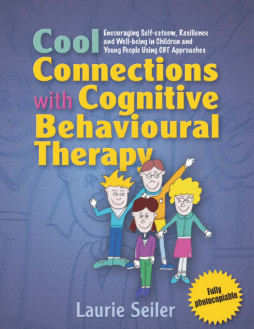
Additional Information
Book Details
Abstract
Cool Connections is a fun, engaging workbook that provides a cognitive behavioural therapy (CBT) approach to positively modifying the everyday thoughts and behaviours of children and young people aged 9 to 14.
Combining a summary of CBT principles and step-by-step guidelines on how to use the materials appropriately with a mixture of games, handouts, home activities and therapeutic exercises, Cool Connections is designed to encourage resilience and self-esteem and reduce feelings of anxiety and depression.
Fully photocopiable, fully illustrated and easy to use, this structured workbook is an effective tool for professionals working to improve the general wellbeing of children and young people, including psychologists, psychiatrists, counsellors, social workers, and child and adolescent mental health services, as well as professionals in residential care settings and educational professionals in child/youth services.
Overall this book provides a clear and attractive CBT programme for children, helping them to identify their thoughts their feelings and make "cool connections" leading to coping strategies. It would also be a very useful and adaptable resource for many types o f therapeutic work.
British Psychological Society, Debate 136
Laurie Seiler is an accredited CBT specialist who is registered with the British Association for Cognitive and Behavioural Psychotherapies. He has many years' experience of working in caring and mental health settings.
Table of Contents
| Section Title | Page | Action | Price |
|---|---|---|---|
| Introduction: Listening to Kenyans through Financial Diaries | |||
| 2. Looking for money: Generating income from a variety of sources | |||
| 3. Managing money: Meeting daily needs and investing for the future | |||
| 4. Growing up: The challenges of low income for children and young people | |||
| 5. Being a woman: How social norms affect women’s lives and livelihoods | |||
| 6. Staying alive: The difficulty in financing healthcare | |||
| 7. Being a citizen: Interactions between low-income people and government | |||
| 8. Living the dream: Hopeful stories of achievement and aspiration | |||
| Appendix: Methodological note |
